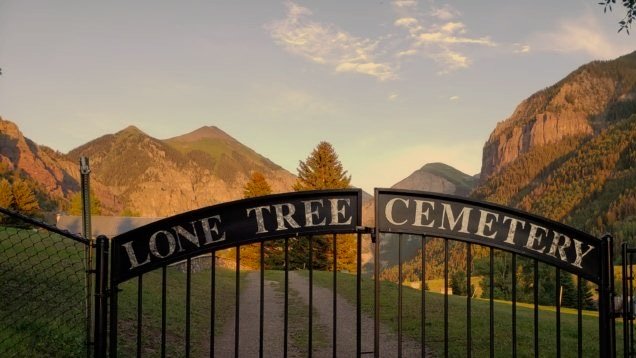
Plots + Interments
-
There is limited space remaining in the historic Lone Tree Cemetery. Availability is limited to the New West Addition in blocks, plots and lots as determined by the Board of Directors. In order to insure the availability of burial plots for full time residents of the community, as evidenced by voter registration, advanced sale and/or distribution of plots is solely at the discretion of the Board of Directors.
Must be age 65+ to be eligible for plot assignment, or anticipating imminent need.
For detailed information on pricing and plot distribution, view here.
-
All burials within Lone Tree Cemetery must be orchestrated by Cemetery grounds keeping staff. Due to our harsh winter environment and steep slopes, burials are conducted between May and November - winter burials are not permitted.
No one may bury human remains or cremains in the Cemetery without first contacting a member of the Cemetery District Board of Directors. This is to insure the burial of loved ones is in the proper allocated plot, lot and block, and that Cemetery procedures have been followed. The Cemetery District requires at least 72 hours notice of burial prior to the time appointed for the burial.
Every state has its own regulations regarding burials. Please refer to this website for some helpful information regarding Colorado Burial and Cremation Regulations.
-
The Historic Lone Tree Cemetery, designated as a National Historic Landmark, exists on sacred, yet fragile grounds. The reality of climate change, coupled with increased development surrounding the cemetery has made it necessary to take steps to protect this environment, while honoring and preserving the history of Telluride and the Cemetery at the same time.
A “Green Burial“ is a way of caring for the dead with minimal environmental impact that aids in the conservation of natural resources, reduction of carbon emissions, protection of the health of both humans and wildlife, and the restoration and preservation of our delicate habitat. With that in mind, the Lone Tree Cemetery District is committed to offering natural choices wherever possible. and has adopted those green burial disposition practices applicable to the preservation and protection of these hallowed grounds.
A green burial emphasizes simplicity and environmental sustainability. A body is prepared without chemicals such as embalming fluids. It is simply placed in a biodegradable coffin or shroud and interred without a concrete burial vault. The goal is complete decomposition of the body and its natural return to the soil. Only then can a burial truly be “ashes to ashes, dust to dust,” a phrase so often used when we bury our dead.
By eliminating embalming, using a shroud or a biodegradable casket, and omitting concrete vaults and copings a body can return to the earth. The Green Burial Council believes a casket, urn, or shroud is suitable for a green burial if it is made from materials and substances that are nontoxic and readily biodegradable, and that these products not be made from materials that are harvested in a manner that unnecessarily destroys habitat.
Regarding cremation, over 70% of people in Colorado are fire cremated, a process that while terrible for the environment, is still permitted by most cemeteries in Colorado, including the Lone Tree Cemetery. While water cremation is not part of our statute, it is better for the environment. Hopefully this will be a practice offered by more mortuaries and funeral homes in the future.
In summary, green burial practices applicable and adopted by The Lone Tree Cemetery are as follows:
No embalmed bodies. This is an invasive process using toxic chemicals for temporary preservation.
No concrete vaults or grave-liners as they impede natural decomposition and introduce non-biodegradable materials such as plastic, fiberglass or cement into the earth.
Only biodegradable material is allowed in the plot, including biodegradable shrouds and caskets.
Green burials are not new. Most burials before the mid-19th century were conducted this way. Green burials are enjoying a resurgence in popularity, for a number of reasons:
They are simple. The idea of wrapping the body in a shroud or placing it in a plain, unadorned coffin appeals to those who prefer their burial arrangement to be simple, natural and unpretentious.
Lower cost. Because green burials do not involve embalming, fancy caskets, or concrete vaults, they can be a very cost-effective alternative to conventional burials, lowering the cost by thousands of dollars.
Conserving natural resources. Each year US cemeteries bury over 30 million board feet of hardwood and 90,000 tons of steel in caskets, 17,000 tons of steel and copper in vaults, and 1.6 million tons of reinforced concrete in vaults. With green burial, fewer resources are used.
Eliminating hazardous chemicals. Embalming fluid contains formaldehyde, a respiratory irritant and known carcinogen. Embalming fluid leaches into our ground water, endangering both humans and wildlife.
Preserving natural areas. Love of nature and a desire for “eternal rest” in a welcoming landscape such as the Lone Tree Cemetery offers peaceful and safe refuge to the humans and wildlife that pass through the grounds. As such, The Historic Lone Tree Cemetery no longer permits burial vaults or concrete copings within the Cemetery. A shroud burial consisting of a body wrapped in a biodegradable shroud and lowered into a grave is permitted. Caskets made of natural, biodegradable, non-toxic materials are permitted. In order to preserve the pristine natural landscape and protect native plants and wildlife, personal plantings and many memorial decorations such as plastic flowers, wreaths, flags, chimes, balloons, and glass are not permitted within the Cemetery.
Although not applicable to The Lone Tree Cemetery due to the need for remains to fit within a cemetery plot, another way of completing the human life cycle is called “Natural Reduction.” (body composting). If you or your family members own rural property, this type of burial may be an option. Body composting is a three month process in which a body is reduced to soil in a vessel with four times the body weight of compost material (organic matter), resulting in about fifteen 5 gallon bags of soil. Although not legal to grow food, one can grow flowers. Most states allow burial on private property, but each municipality has its own zoning requirements, so be sure to check and get the required permits.
-
Immediate Need, full time residents within the Cemetery District.
Immediate Need, full time residents within San Miguel County, Colorado.
Advance Sale of Plots solely at the discretion of the Board of Directors, and prioritized as follows:
Full time senior residents and registered voters within the district or San Miguel County - over the age of 65 or anticipating imminent need - who are engaged in end of life planning. Limit two plots, space permitting.
Any other advance sale of plots solely at the discretion of the Board of Directors.
There is NO PERPETUAL CARE OF MONUMENTS in the Lone Tree Cemetery. Monuments, headstones and flat markers must fit within the plot, allowing at least 2 inches from either side of the plot.
Proof of interment rights relies on records kept by the Cemetery District, only if such records are available, and/or a receipt for payment of interment right signed by a Cemetery official.
The Lone Tree Cemetery is an historic cemetery, sitting on a rocky hillside. Sizes for full body plots within a lot may vary. Plots dedicated to cremated remains will have varying smaller dimensions. A lot consists of two plots, located side by side. Lots are located within Blocks. A single plot may be used for one (1) traditional full body or casket burial, and/or four-six cremated remains (cremains) as determined by size of urn or vessel holding cremains as well as subsurface conditions. No plot, lot or portion thereof may be filled above the established surrounding grade. Subsequent cremations may be interred in a family plot which contains a previously buried casket with permission from surviving family members. Plots are solely for the use of the purchaser and/or his/her immediate heirs. Interment rights may not be reassigned. If a plot is to be reassigned, it must be returned to the Cemetery District, at which time the District will refund the original purchase price. Purchase of a right to use a cemetery plot allows the purchaser to inter human remains within the specified cemetery plot in accordance with the cemetery district’s applicable policies and procedures. Purchasers of cemetery plots do NOT receive legal title to their burial plot. See: 30-20-808(7) C.R.S.
